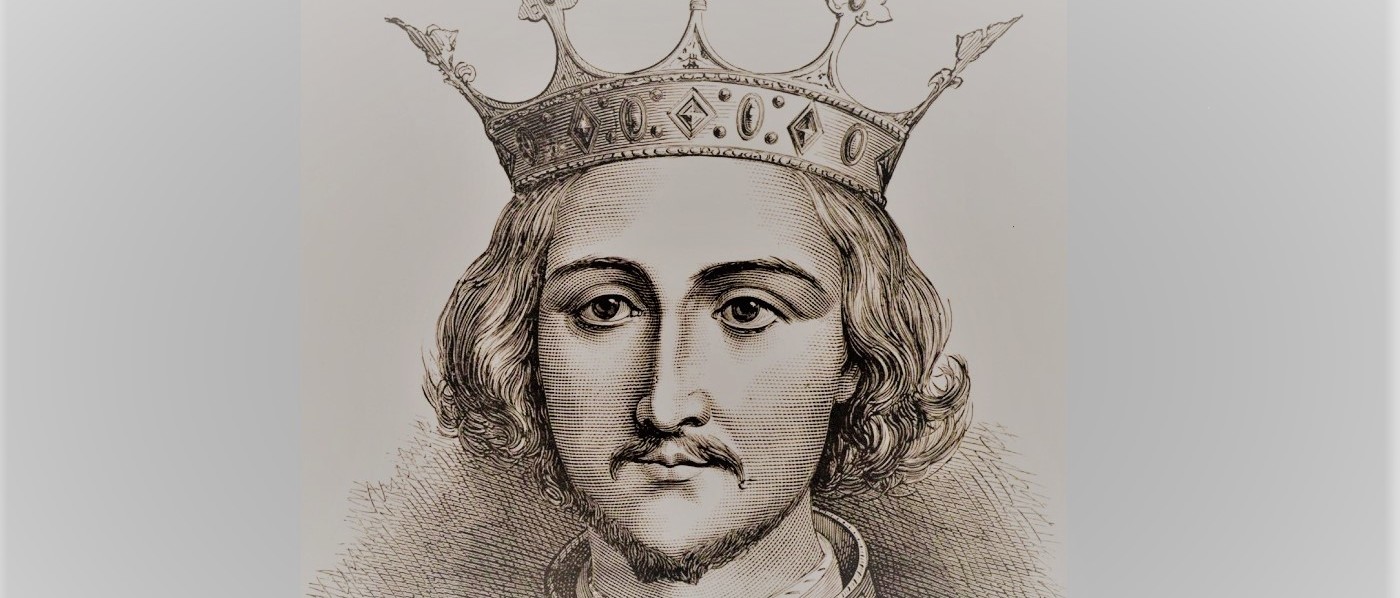Richard II of England
Posted on 5th January 2021
Richard was born at the Archbishops Palace in Bordeaux, Aquitaine on 6 January 1367, the son of Edward, the Black Prince and Joan of Kent, the grandson of Edward III. He was to be known as Richard of Bordeaux.
As Richard was a second son, he was not expected to take the throne, but following the deaths of his elder brother Edward in 1371 and his father the Black Prince in 1376, he became heir to the English throne.
The following year his grandfather, the King died and Richard at the age of ten was crowned King of England on 13 July 1377. Due to his age the government was managed by a series of councils however his uncle, John of Gaunt held great influence over the throne.
Reign 1377 - 1399
The first major challenge of Richards reign, the Peasants Revolt in 1381 was caused by the implementation of the Poll Tax in 1380. The people had already been taxed greatly to fund unsuccessful military expeditions abroad and this further Poll Tax caused the people to revolt.
Richard knew he was in a difficult position and decided to negotiate with the rebel leader Wat Tyler, but even though agreements were reached the rebels continued with their looting and killing. Following the murder of Wat Tyler, the atmosphere of the rebellion intensified, but Richard offered clemency to the rebels and allowed them to return to their homes.
On 20 January 1382 Richard, at the age of fifteen married Anne of Bohemia, a political union that turned into a happy yet childless marriage and Richard was deeply upset when she died in 1394.
Richard was to marry for political reasons again in 1396. He married the six-year- old daughter of King Charles VI of France, Isabella of Valois, to forge peace with France.
In the early years of his reign, Richard formed a close circle of friend but these were unpopular with the political elite in parliament, and a commission was formed named the Lords Appellant in 1386 to oversee the Kings activities.
The members of this were:
Thomas of Woodstock, Duke of Gloucester (Richard’s uncle)
Richard FitzAlan, Earl of Arundel
Thomas Beauchamp, Earl of Warwick
Then later joined by:
Henry Bolingbroke, Earl of Derby
Thomas Mowbray, Earl of Nottingham
The Lords Appellant had many of Richard’s friends executed, and following this Richard agreed to work with the Lords Appellant while continuing to plot his revenge.
In July 1397, Richard had the Duke of Gloucester, the Earl of Arundel and the Earl of Warwick arrested. The Earl of Arundel was executed, the Duke of Gloucester was imprisoned and then murdered and the Earl of Warwick was exiled.
Richard knew that the House of Lancaster represented by John of Gaunt and Henry Bolingbroke, was a great threat to him and in 1397 Richard exiled Henry Bolingbroke for ten years, also exiling his Lords Appellant ally the Earl of Nottingham for life.
John of Gaunt died in February 1399 and Richard extended Henry Bolingbroke’s French exile to life.
Richard, now feeling safe went on campaign to Ireland. While in Ireland, Henry Bolingbroke landed at Ravenspur, Yorkshire in June 1399 and drummed up support for himself with the Earl of Northumberland. Richard returned from Ireland, landing in Wales on 24 July 1399, however he had lost popular support.
He entered negotiations with the Earl of Northumberland and then surrendered to Henry Bolingbroke and abdicated his throne. Henry Bolingbroke was crowned King Henry IV on 13 October 1399.
Richard was imprisoned in the Tower of London then moved to Pontefract Castle where he died in 1400..
Tagged as: Junior Middle Ages
Share this post:





